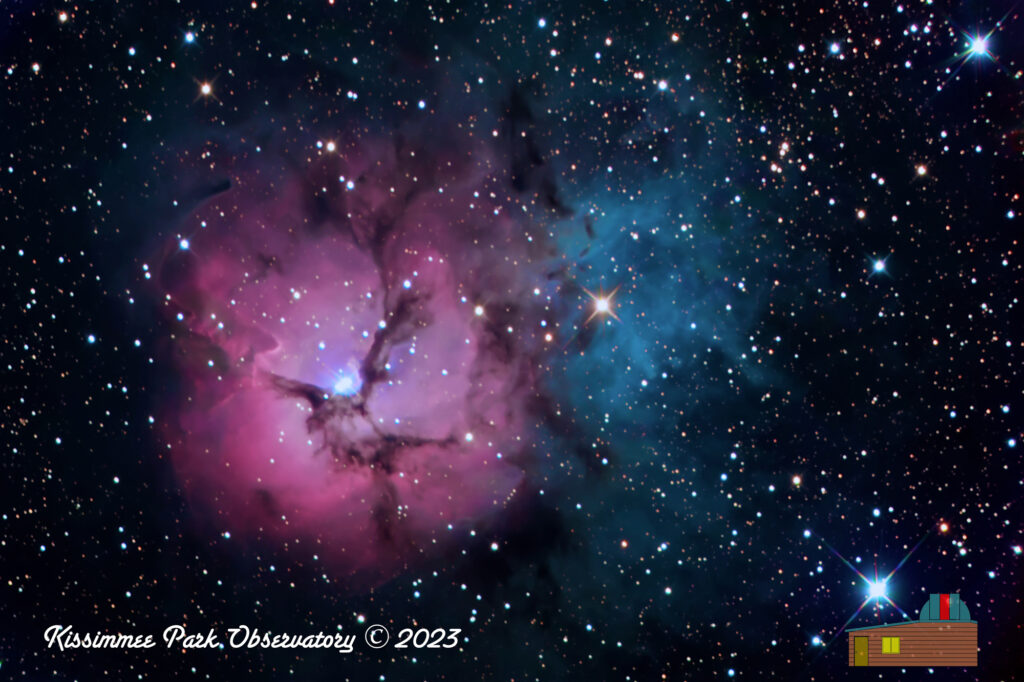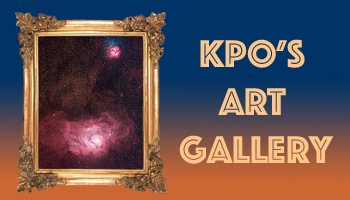In the vast expanse of the cosmos, there are countless wonders that continue to captivate and mystify us. One such marvel is the Trifid Nebula, a stunning celestial object located in the constellation Sagittarius. Named after its three distinct lobes or “trifids,” this nebula is a sight to behold, with its vibrant colors and intricate details that have fascinated astronomers for centuries.
The Trifid Nebula, also known as Messier 20 or NGC 6514, is a combination of an emission nebula, a reflection nebula, and a dark nebula. It is situated approximately 5,200 light-years away from Earth and spans an impressive distance of about 40 light-years. This vast size makes it easily visible through telescopes, making it a favorite target for both amateur and professional astronomers.
The three main lobes that give the Trifid Nebula its name are a result of the complex interplay between gas and dust within the nebula. The emission nebula, characterized by its striking red hue, is primarily composed of ionized hydrogen gas. This gas is energized by the intense ultraviolet radiation emitted by a cluster of young, hot stars at the nebula’s center.
Adjacent to the emission nebula is the reflection nebula, which appears blue due to the scattering of light by tiny dust particles. These particles reflect the light from nearby stars, giving the nebula its ethereal glow. The dark nebula, on the other hand, consists of dense clouds of gas and dust that block the light from background stars, creating contrasting dark lanes amidst the vibrant emission and reflection nebulae.
The Trifid Nebula is a celestial nursery, nurturing the formation of new stars in its midst. The intricate details and structures seen within the nebula are a testament to the immense forces at play in the cosmos. From the turbulent birth of stars to the interstellar dust and gas sculpted by stellar winds and radiation, the Trifid Nebula showcases the complexity and beauty of the universe.
So the Trifid Nebula stands as a testament to the awe-inspiring beauty and complexity of the cosmos. Its three distinct lobes, vibrant colors, and star-forming regions make it a captivating sight for both amateur stargazers and seasoned astronomers. As we continue to explore the depths of the universe, the Trifid Nebula serves as a reminder of the immense wonders that await us in the vastness of space.
Click on the image to view a larger version that you can explore.
I captured an image of this target with the KPO Reflector back in 2020.
See this image documented in Catching Ancient Photons on YouTube:
Image Info
- Imaged from the KPO field, in Saint Cloud, Florida
- Camera : ZWO ASI2600MM Pro
- Scope: Orion RC-12 Ritchey-Chretien Astrograph, 2450mm fl, F/8
- Mount: iOptron CEM-120
- Luminance: 20 subframes of 300s = 100 min integration
- Red: 12 subframes of 300s = 60 min integration
- Green: 10 subframes of 300s = 50 min integration
- Blue: 12 subframes of 300s = 60 min integration
- Total integration time: 270 min = 4.5 hours.
- Captured via ASIAir Pro automation
- Optical tracking via ASIAir automation via the ASI1600mm Pro guide camera
- Separate channels stacked and LRGB integrated in Astro Pixel Processor
- Image run through Super DeNoising
- Final processing in Aperture
Buy this image as a print or framed art piece in our Art Gallery.


